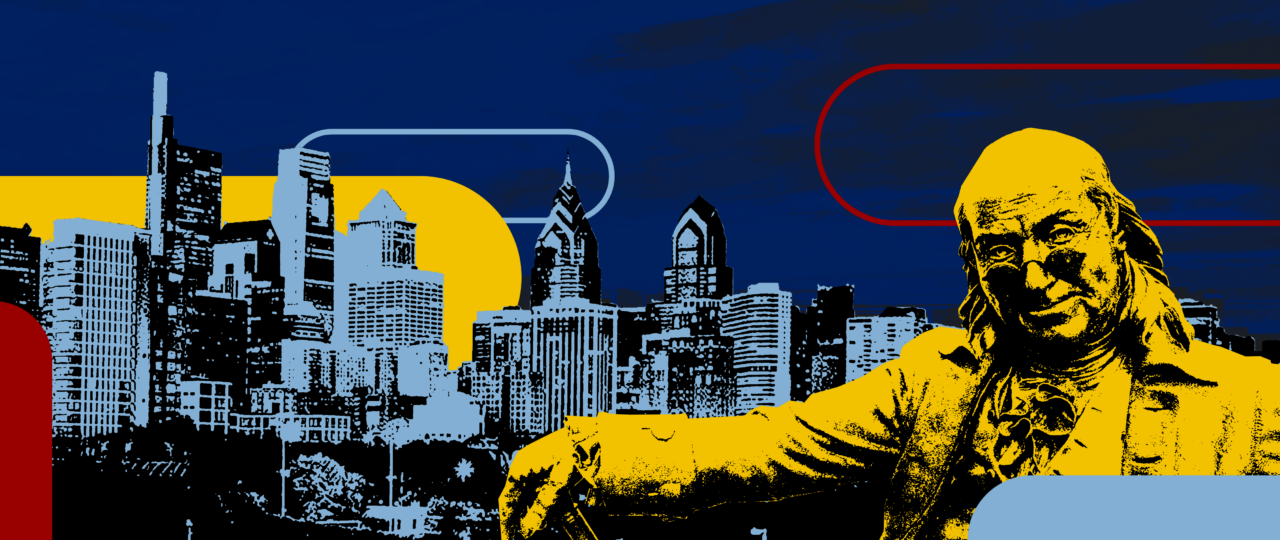It’s safe to say that at ChatterBlast, we’re no strangers to education marketing and advertising. From admissions campaigns to virtual campus tours, we’ve done a little bit of everything.
Or so we thought, until nearly three years ago when we began our partnership with the Office of the Executive Vice President at The University of Pennsylvania. Penn itself wasn’t new to our client roster—we’ve worked with a long list of departments and schools across the university for a decade—but the challenge was: How can we transform a routine social and economic impact report into a dynamic communications campaign that tells the story of the mutually beneficial relationship between a university and its city?
To get started, we knew we needed to assemble an all-star team. A project of this complexity demanded experts in multiple areas, so we reached out to our longtime friends and partners at SteegeThomson and Electric Kite (formerly eCity Interactive) to pool our strengths. The SteegeThomson team brought a deep understanding of higher education impact messaging, and the Electric Kite team the acumen to develop a powerful website. Both of these partners also had past experience working with Penn, and alongside our own team’s knack for strategy, storytelling, and creative production, we made an unstoppable team.
With our Avengers of strategic storytelling assembled, we started to look for inspiration. We conducted deep analyses of the way that peer universities and anchor institutions communicated their impact, and we conducted dozens of internal and external interviews to gather feedback on what the campaign should communicate and what kind of perceptions we would face.
As we completed our audit and moved into the development of a comprehensive communications strategy in the spring of 2022, we did so with a clear understanding of who we wanted to reach—the “moveable middle,” AKA people who were not already either Penn’s biggest cheerleaders or detractors—and the gaps we needed to fill. Our research showed a lack of human-centered stories and centralized resources for identifying and exploring them.
With the goal of creating that type of resource, we built the framework for a this effort, which included:
- A campaign title (Penn & Philly) and bespoke visual identity
- A custom website
- A series of video vignettes
- A series of infographics
- An owned Instagram channel
- A communications toolkit for marketers across Penn’s schools and departments
- A digital advertising plan
Each component required careful communication with partners across the university, and our intention from the beginning was to use this campaign’s content to amplify the existing chorus of Penn communications, rather than simply try to have our content shout above it. We created a toolkit packed full of information about the campaign’s goals and how to extend its content, which we distributed to communications staff across the university. Plus, we launched a request form on the website through which Penn communicators can submit stories for incorporation into the campaign, which has so far received submissions from all 12 schools.
This collaborative approach is reflective of the campaign itself: Penn & Philly are stronger together, and successes of the university and city depend on each other. Likewise, the campaign is made stronger when we bring people together across teams, departments, and communities to tell powerful stories. That’s also why we’ve recently begun filming a new series in our sister studio, GroundFloor Studios, that brings together community members and Penn representatives to have two-way conversations about stories of real-life impact made possible by Penn and Philly collaborating.
When we started this project nearly three years ago, we knew we would do plenty of our own learning along the way. The insights have been endless, but these lessons stand out the most:
- An education-related campaign isn’t really about education. It’s about culture, community, and the ways that the educational institution contributes to those sacred ideas, both at large and on a personal level for the individual being educated.
- Looking only at apples-to-apples peers or contemporaries as examples hurts you more than helps you. This campaign was about challenging traditional, under-informed perceptions of a long-established entity, so we looked to global brands who have embarked on similar efforts for inspiration, not just Ivy League universities.
- Not every communications effort needs to focus on changing the minds of its most vocal critics. Instead, more impact comes from reaching audiences without a firm opinion and helping them understand the matters at hand.

The public launch of Penn & Philly is only the beginning of its story. Our combined project team traveled to Lancaster, Pennsylvania for the 2024 CUPRAP Professional Development Conference, where we gave a presentation about how Penn & Philly re-imagines higher education impact reporting, and through this experience we learned how many universities and educational institutions have opportunities to share their stories of community impact on a deeper, richer level.
We look forward to continuing to collaborate with partners to bring more meaning (and results) to education-related marketing. Shoot us a message to get started.




